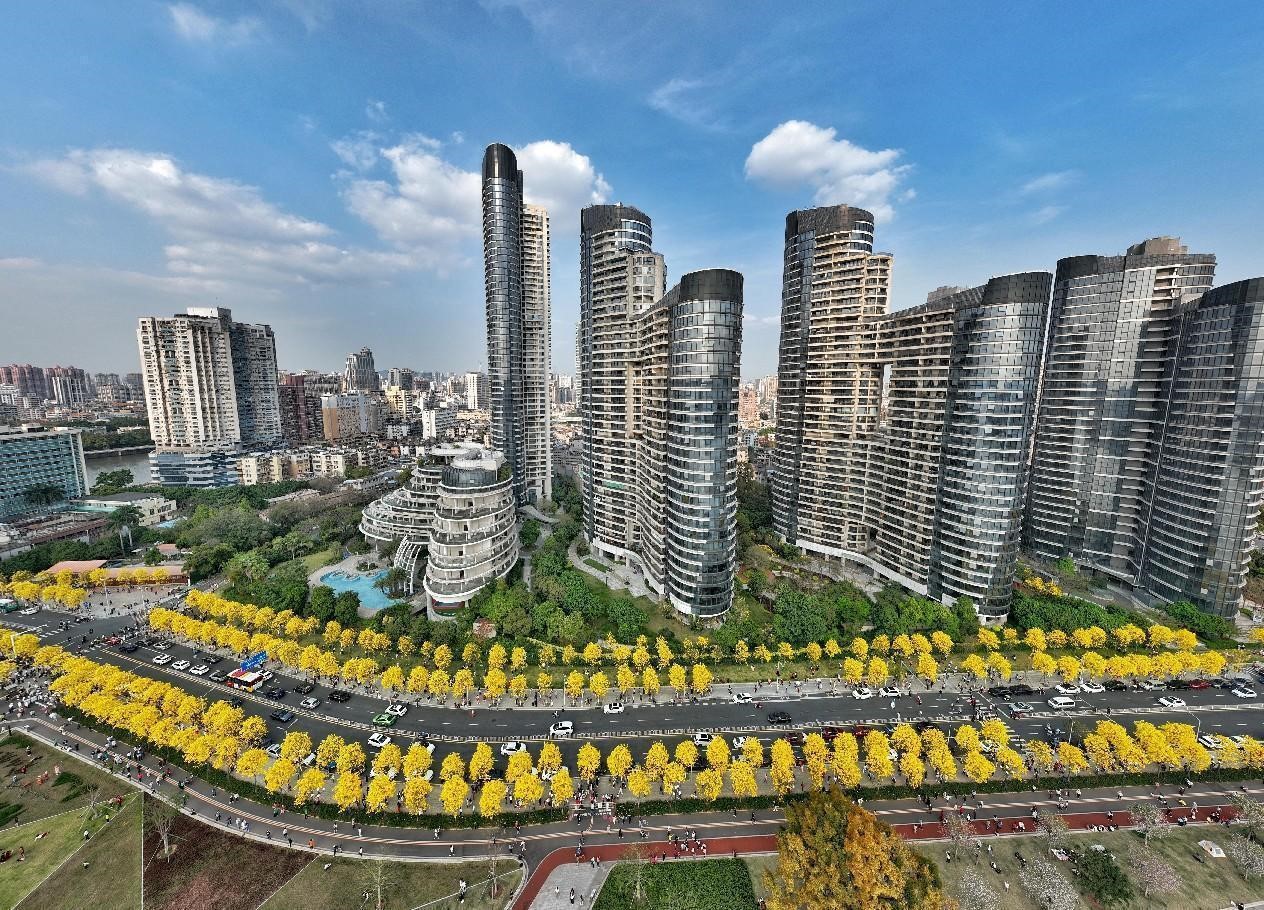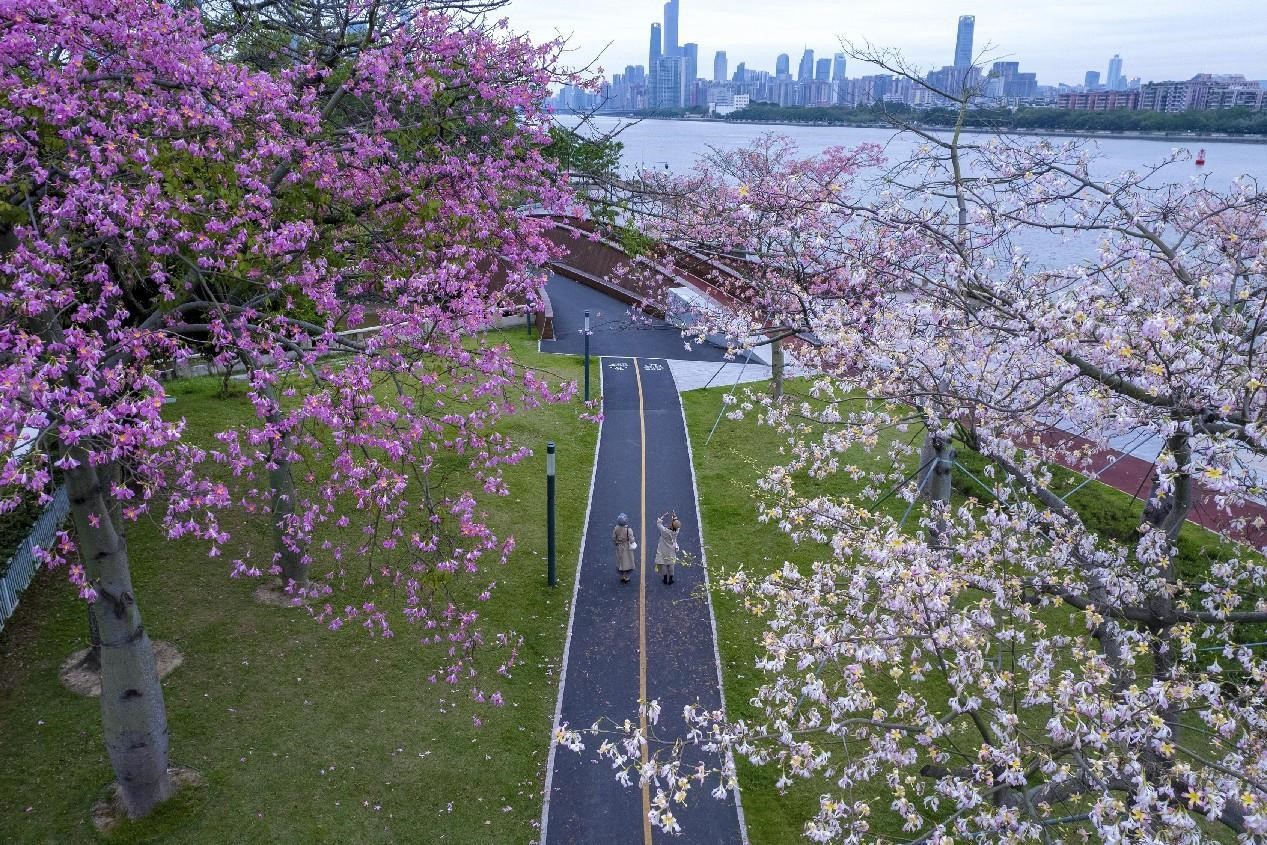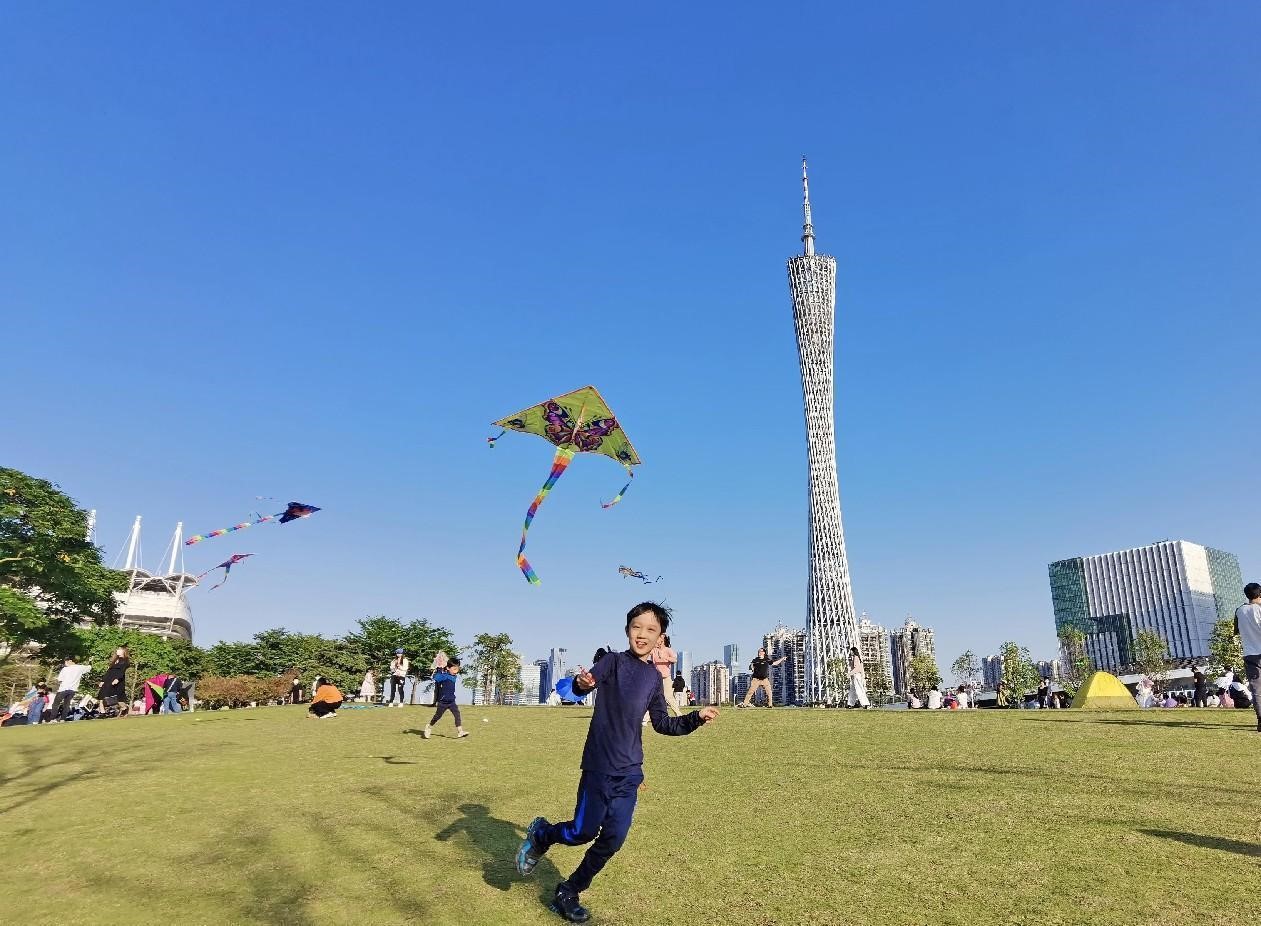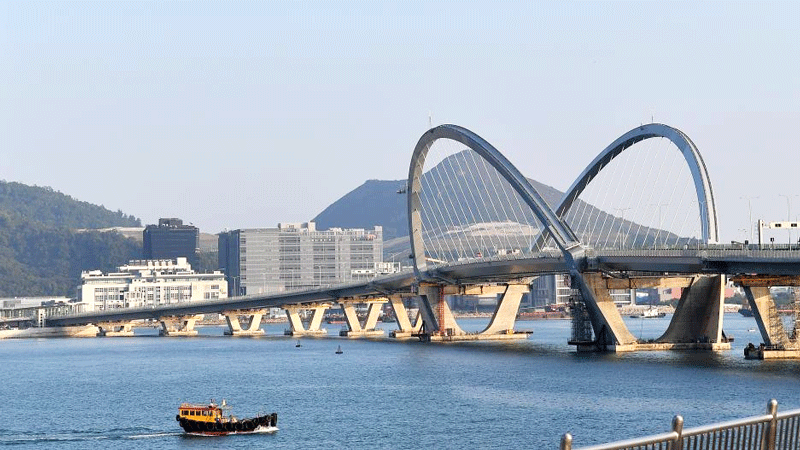Guangzhou in S China refines urban planning for higher-quality urban space
Facing the landmark structure Canton Tower across the Pearl River in Guangzhou, south China's Guangdong province, a two-storey white building stands at the end of the iconic Liede Bridge.
"I always pass it by when taking a walk in the evening. It's beautiful, but I never thought it was a transformer substation," said a man surnamed He who lives in the neighborhood, referring to the two-storey white building.
The man joined an open day activity hosted by the transformer substation, which totally renewed his impression of the structure. "I always worried about the radiation, but now with the open data, I'm at ease," he told People's Daily.

Golden trumpet trees blossom on the two sides of a road in Haizhu district, Guangzhou, south China's Guangdong province, March 12, 2022. (People's Daily Online/Fu Haiyan)
The transformer substation was designed by Chen Xiong, vice president of the Architectural Design and Research Institute of Guangdong province, said an employee working at the substation.
The structure is more than a transformer substation. It also serves as a science popularization facility and a part of the local landscape.
"Openness and availability are what we stress in our design. We aim at turning the transformer substation from a sole municipal facility into a public structure favored by local residents," said Chen, the designer of the substation.
Chen believes that the best public places are those that attract and please people. "Small structures are inconspicuous, but they are key to improving the character of a city," he said.

Floss silk trees blossom in a pocket park on the bank of the Pearl River in Haizhu district, Guangzhou, south China's Guangdong province, Dec. 2, 2022. (People's Daily Online/Lv Huadang)
The delicately designed transformer substation is a miniature of Guangzhou's efforts to refine its urban planning and construction. As a major driver of the development of the Guangdong-Hong Kong-Macao Greater Bay Area and listed as a National Famous Historical and Cultural City, Guangzhou prioritizes high-quality space for production, life, and ecology. It is constantly addressing the public's demand for aesthetics, public art, and environmental quality.
Since 2019, Guangzhou has started recruiting professionals from all sectors of society for the design of communities. So far, it has employed 344 community designers and 163 rural planners.
The chief planner of Guangzhou's Yuexiu district joined the whole process of a facelift project of the Haizhu Square, which turned the traffic island-type square into a pedestrian zone. A designer group in Liwan district built "pocket squares" to improve the environment along small alleys.
Pazhou Internet Innovation Cluster, located in Haizhu district, is a 100-billion-yuan innovation hub joined by a number of internet giants, such as Alibaba, Tencent, and the e-commerce platform Vipshop.
The cluster is covered by a number of characteristic tall buildings but remains a harmonious whole. Verandas that integrate local elements stand on both sides of the roads there. Buildings are connected with each other by corridors, which reflect the profound local culture and provide more convenience for residents.
A relevant official told People's Daily that the municipal government of Guangzhou monitored the whole process of the cluster's construction and ensured optimal land utilization with high-level planning.

A boy flies a kite near the Canton Tower in Guangzhou, south China's Guangdong province, Apr. 3, 2022. (People's Daily Online/Wang Guorong)
As a city with a history of over 1,000 years, Guangzhou also focuses on maintaining its traditional urban texture while promoting modernization.
Yongqingfang, a historical block in Guangzhou, has gone through conservation projects to improve its environment, better inherit its traditions, and lift its appearance. Pantang Wuyue village of the city had its traditional buildings renovated and launched programs that promote traditional craftsmanship. By introducing B&Bs, coffee shops, and art galleries, Xinhepu historical block has nurtured a new business model that combines the traditional with the modern. Besides, the city also launched a series of projects that endow industrial heritages with new functions.
In recent years, Guangzhou has rolled out a slew of policies that enhance the protection of traditional culture during urban and rural development. It has recognized 485 buildings with traditional features and 13 historical buildings. Besides, the city has completed research on the conservation of 378 traditional streets and alleys.
Photos
Related Stories
- South China's Guangzhou to host int'l finance forum
- City view of Guangzhou, one of top summer travel destinations in China
- China's Guangzhou cuts community transmission of COVID-19
- China to protect historical, cultural heritage in urban, rural planning
- Sewage treatment plants transformed into ecological underground sewage treatment plants in Guangzhou
Copyright © 2022 People's Daily Online. All Rights Reserved.









